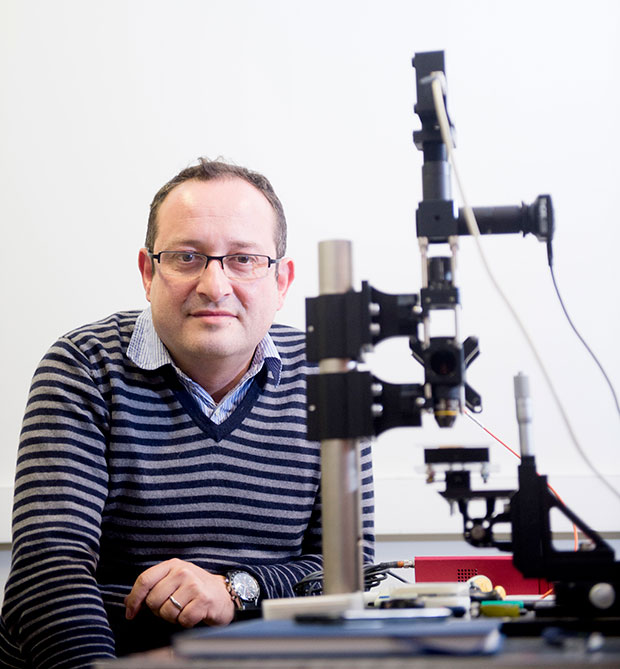Chiral plasmonics nanomaterials
A new type of material called chiral plasmonic nanomaterials, which is composed of gold nanostructures, enables light to be bent and twisted in ways impossible with traditional glass lenses. This offers the chance to detect unprecedented nanogram amounts of biological material such a viruses or toxins. A significant hurdle for the transformation of plasmonic nanomaterials from a scientific curiosity to a useful generic technology is that nanostructures have been fabricated using electron beam lithography, which is both expensive and time consuming and enables only one-off fabrication.
By using a technology similar to that used to manufacture Blu Ray Discs, a team of Chemists and Engineers led by Dr Malcolm Kadodwala have invented a cheap plastic-based chiral plasmonic nanomaterial that they are developing into new medical diagnostic technologies. They are currently, working with colleagues at the Beatson Cancer Research UK Laboratory in Glasgow where new plasmonic nanomaterials are being evaluated for applications in rapid multiplex screening of protein–protein interactions relevant to the diagnosis and treatment of a variety of cancers. The new technology offers the opportunity of massive ( >1000) multiplexing , or “ultraplexing”, a capability that is currently not available.





